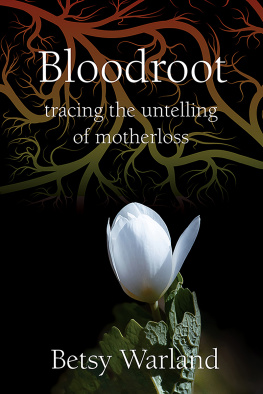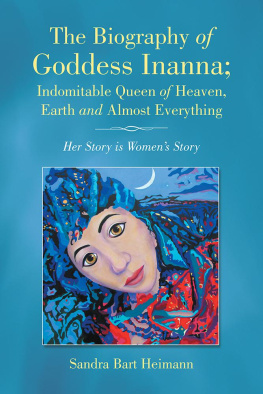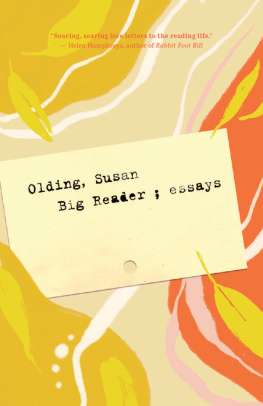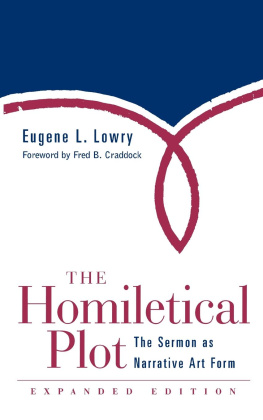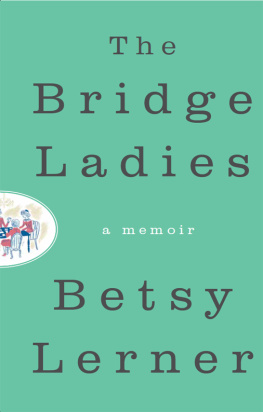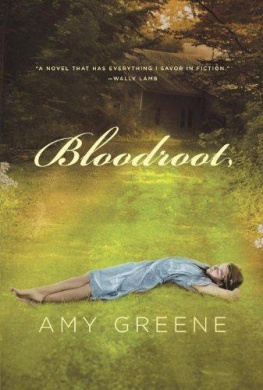Bloodroot
tracing the untelling of motherloss
Praise for Bloodroot
Reading Bloodroot , a thrilling accomplishment of craft, intellect and intuition, I relived my own process of motherlessness. And Warlands narrative of motherloss is a process, though not linear, of storytelling. Bloodroot s narrative offers us its own companionship, its own collusion with us as our mothers die.
Myrna Kostash, based in Edmonton, author of Ghosts That Walk the Parkland
Betsy Warlands Bloodroot is a classic in motherloss memoir that reaches every reader where she is in that life-long journey of learning to accept death as part of our lives. Generations have profited from this complex, brilliant, and insightful book. And now with the new edition, Warland offers moreit reunites the original work with its roots.
Carolyn Gammon, Author, On Her Own Terms: Poems about Memory Loss and Living Life to the Fullest
Every word in this book is stretched to capacity, gently unpacking the truth about all the unmet needs that often sit between mothers and daughters. Offered with such tenderness, and careful pacing, the white space invites us to breathe between revelations as we birth new ways, more compassionate ways, to see one another. This is, as Betsy says, a narrative about abandoning disappointment; acquiescing to grace .
Jnna Kirton, Mtis/Icelandic poet
Like many readers of Bloodroot 20 years ago, I swayed mightily in Betsy Warlands sensational e/motional capacity to space and pace this intimate daughter-writer narrative of mourning that both says and unsays. I feel anew profoundly accompanied by Warlands embodied probing of the contradictions and excisions that narrative performs. Warlands brilliance as an innovator of creative nonfiction unfolds throughout Bloodroot and the fascinating, generous essay that accompanies this new edition.
Margaret Christakos
Copyright 2021 Betsy Warland
Except for the use of short passages for review purposes, no part of this book may be reproduced, in part or in whole, or transmitted in any form or by any means, electronically or mechanically, including photocopying, recording, or any information or storage retrieval system, without prior permission in writing from the publisher or a licence from the Canadian Copyright Licensing Agency (Access Copyright).

The publisher gratefully acknowledges the support of the Canada Council for the Arts and the Ontario Arts Council. The publisher is also grateful for the financial assistance received from the Government of Canada.
Cover design: Val Fullard
eBook: tikaebooks.com
The literary quotations that appear in this book (pages 62, 123, 128 ) are excerpted from Hlne Cixous, Three Steps on the Ladder of Writin g (New York: Columbia University Press, 1993). Word definitions and etymologies are from The American Heritage Dictionary (Boston: Houghton Mifflin Company, 1981).
Im Forever Blowing Bubbles, by Jaan Kenbrovin & John William Kellette
1919 (Renewed) Warner Bros. Inc.
All Rights Reserved Used by Permission
WARNER BROS. PUBLICATIONS U.S. INC., Miami, FL33014
Library and Archives Canada Cataloguing in Publication
Title: Bloodroot : tracing the untelling of motherloss / by Betsy Warland.
Names: Warland, Betsy, 1946- author.
Description: Series statement: Inanna signature feminist publications | Previously published: Toronto : Second Story Press, 2000.
Identifiers: Canadiana (print) 20210262249 | Canadiana (ebook) 20210269448 | ISBN 9781771338370
(softcover) | ISBN 9781771338387 (HTML) | ISBN 9781771338394 (PDF)
Subjects: LCSH: Warland, Betsy, 1946- | LCSH: Warland, Betsy, 1946-Family. | CSH: Authors, Canadian (English)20th centuryBiography. | LCSH: Mothers and daughters. | LCSH: Mothers DeathPsychological aspects. | LCSH: BereavementPsychological aspects. | LCSH: Grief. | LCGFT: Autobiographies.
Classification: LCC PS8595.A7745 Z46 2021 | DDC C811/.54dc23
Printed and bound in the United States.
Inanna Publications and Education Inc.
210 Founders College, York University
4700 Keele Street, Toronto, Ontario M3J 1P3 Canada
Telephone: (416) 7365356 Fax (416) 7365765
Email:
Bloodroot
tracing the untelling of motherloss
by
Betsy Warland

Toronto, Canada
www.inanna.com
with gratitude to Luciana Ricciutelli, who mothered the publication of so many women-authored books for so long.
for the memory of my mother
a.k.a. Mildred, a.k.a. Billie, a.k.a. Buddy
a complex woman
Foreword
I FIRST READ BLOODROOT IN 2008, while participating in the poetry colloquium at Sage Hill, where I was trying to tell a mother-daughter story of my own. Id been writing conventional lyric poems, but they didnt feel true to the experience I wanted to convey, or not completely, and my manuscript had stalled. Our instructor, Erin Mour, encouraged me to look to language itself for my inspiration and to consider more elastic forms. She recommended a few exemplars, none of which I could access quickly in remote rural Saskatchewan. I wrote down their titles for later reference.
I walked from our meeting to the small library at the retreat facility, where Bloodroot fell from a shelf and into my hands. It was precisely the book I needed as a writer. It was also the book I needed as a daughter.
My parents were then in their eighties and still lived in their own home. But they were frail, and I knew their health would soon deteriorate. Like Betsy Warland, my relationship to my mother was complicated by my sense that she could not bear much honesty from me, as well as by her wildly associative and often cutting style of communication, which arose, I knew, from her unaddressed pain. So, while the specifics of our family histories differed, I recognized the patterns Warland described. And, if I didnt know when, exactly, my mother would die, I knew her death was coming soon, and I also knew I needed to prepare myself for this transition, because for all the tension that often existed between us, she was my only mother, and I her only daughter.
Bloodroot helped me begin that preparation. It showed me a way to sit with my conflicted feelings in imagination, so that less than a decade later, when I was the daughter keeping watch over her mother in a hospital room, I was able to stay present and open to the experience instead of retreating into fantasy or denial. I was able to care for my mother with curiosity and tenderness.
Bloodroot has played that role for many readers. As Warland writes:
Whether or not a woman is close to her family; whether or not her mother is dead or alive; whether or not a woman is or is not fully realized in her life has scant bearing on her feelings for the one who bore her. (121, first edition)
Women have in common an intense need to understand the bond between themselves and their mothers, the people whose bodies they shared for nine months and to whom they are forever genetically linked and indebted. Bloodroot honours that need.
*
Genetic links and debts loomed large in my mind when I thought about the mother-daughter narrative I was trying, and mostly failing, to write. It was a story about new life, not about death, and it was told from a mothers point of view instead of a daughters. The difficulty was that my blood did not run through my daughters veins. Unlike most mothers, I had not carried my daughter within my body. Instead, our story began in transnational, transracial adoption. I had translated my child carried her across from one country, one culture, one language to another. Meanwhile, my daughter had lost her first mother and would never know her. What kind of connection could spring from such profound loss? That was the question I needed to explore.

